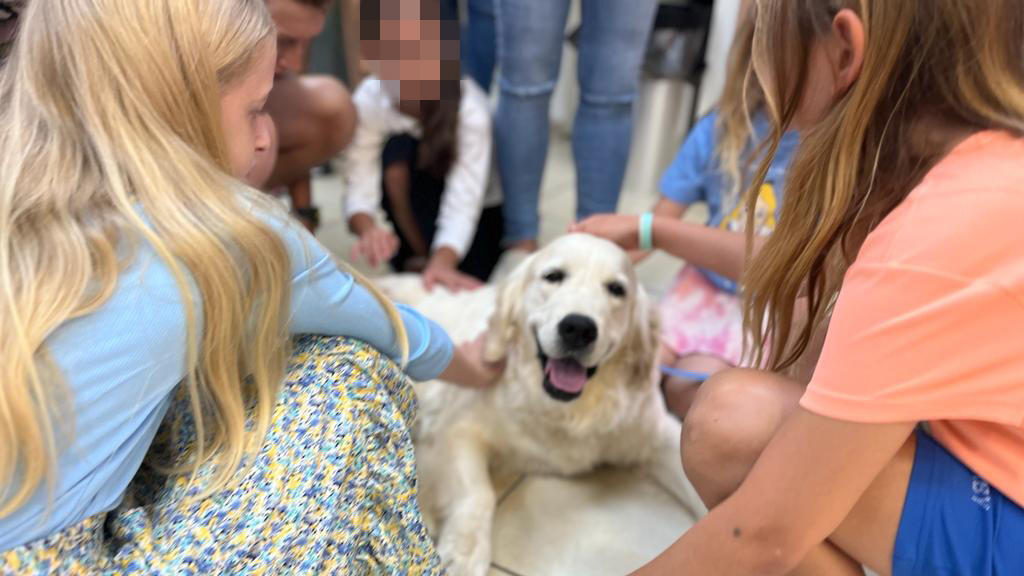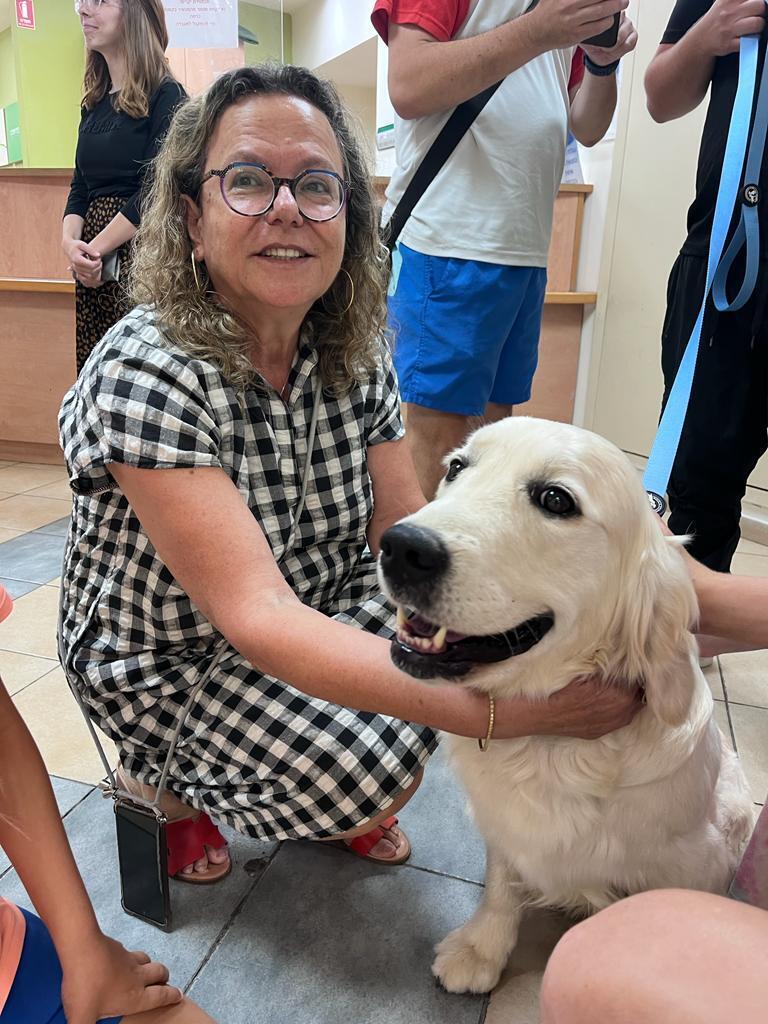“We worked with a child who was diagnosed with autism spectrum disorder. He struggles with verbal communication and has difficulty expressing his feelings. But when a dog walks into the room… , the mood immediately changes, which makes him feel better.” Dr. Miriam Fink-Lavi, a community psychiatrist in Jerusalem, says, “He has an anxiety disorder. He even approaches dogs and feeds them.” “The change in his anxiety level is noticeable.” She is leading a unique initiative, a first for the National Service Dog Health Fund.
This initiative, carried out in cooperation with Ofer – Centers for Therapeutic Dog Training, involves keeping dogs in clinic waiting rooms and treatment rooms. These dogs accompany children and adults during their visits, helping to ease the anxiety that can often occur during waiting times and receiving treatments.
“As a child and adolescent psychiatrist, I have observed an increasing demand for mental health services throughout my career. This increase has been driven by the impact of coronavirus, war, increased awareness and stigma around mental health. This is due to a variety of factors, including the reduction of “Today, there is a broad consensus in Israel about the importance of mental health. However, there is a huge gap in the availability of mental health services for children, adolescents, adults, and the elderly who actually suffer, and in the capacity of public institutions. We know there is a gap, and mental health services provide the empathetic, personalized care they need.”
To expand treatment options, Dr. Finklavy launched this new initiative with other partners. She said: “We tried to find an accessible and accurate method that could benefit many people. Some people find it difficult to participate in psychotherapy or express their emotions. Such people are looking for alternative ways to help improve their mental health and mental well-being.” Facilitate the way. ”
She says the use of therapy and service dogs in public mental health services has increased significantly in recent years. Many psychiatric units already include therapy dogs as part of their treatment plans. Additionally, therapy dogs are utilized in a variety of therapeutic settings to reduce stress, anxiety, pain, and loneliness.
“We observe that dogs have many benefits, whether they are used as emotional support or as companions for people dealing with crisis, trauma, post-traumatic stress or depression. “I did,” she explains. “People who have a dog at home have a certain resilience that can help reduce feelings of loneliness, depression, and anxiety.
“This is especially true for people who are dealing with complex post-traumatic stress caused by war or terrorist incidents. Dogs can be a pathway into the patient’s heart, removing obstacles and providing an emotional connection and treatment for the patient. Studies have shown that the presence of a pet, or even the mere thought of a pet, can lead to a decrease in cardiovascular measurements such as blood pressure and heart rate. ”
This service works in two main areas. “First, we introduced a dog named Cookie to the clinic. Cookie visits the clinic regularly and is considered part of the team. Kids and adults can meet her and make connections,” Fink said. Ravi explains. “She soothes anxiety, relieves tension, and provides a source of emotional and empathic comfort. It’s a creative and unexpected element that often brings smiles to people’s faces. Research shows that this can also help reduce staff burnout.” It can bring a smile and provide comfort, especially during intense and difficult times. ”
Second, the program provides traditional dog-assisted therapy services, also known as therapy dog therapy. “When we recognize that indirect bonding with dogs can be beneficial, for example in cases of post-traumatic anxiety, communication disorders, autism, and issues related to social connections and self-image, we “This is a little different from traditional therapy, which usually involves talking. It can be used as a tool for both individual and group therapy sessions,” Finklavy said. I will explain in detail.
“Many adults and children have a fear of dogs, and suddenly they have the opportunity to interact with a therapy dog whose demeanor is less intimidating and even friendly. One meeting can often alleviate this fear of dogs.” In another example, a girl who struggles with an eating disorder and feelings of loss struggles to open up and share her feelings. I am. When the dog was in the room, the dog became more willing to share, and the treatment improved significantly. ”
So what does the future hold? Dr Fink-Ravi says the program is part of a broader trend aimed at finding innovative solutions to address the growing demand for mental health services.
“Our aim is essentially to change or widen the approach to mental health services. We do not just passively utilize existing resources, we actively engage with patients and therapists and provide more We are identifying where we can provide compassionate services. We are exploring how we can provide mental health services.” Introducing innovative ways to provide more breathing space. You can: For example, how to prevent depression before it becomes an epidemic or how to give people the tools they need to prevent post-traumatic stress. This is an additional type of service that is part of Services. “The suite of services we provide expands our system and allows for a more comprehensive response. We recognize the public’s great need for this type of approach.”



